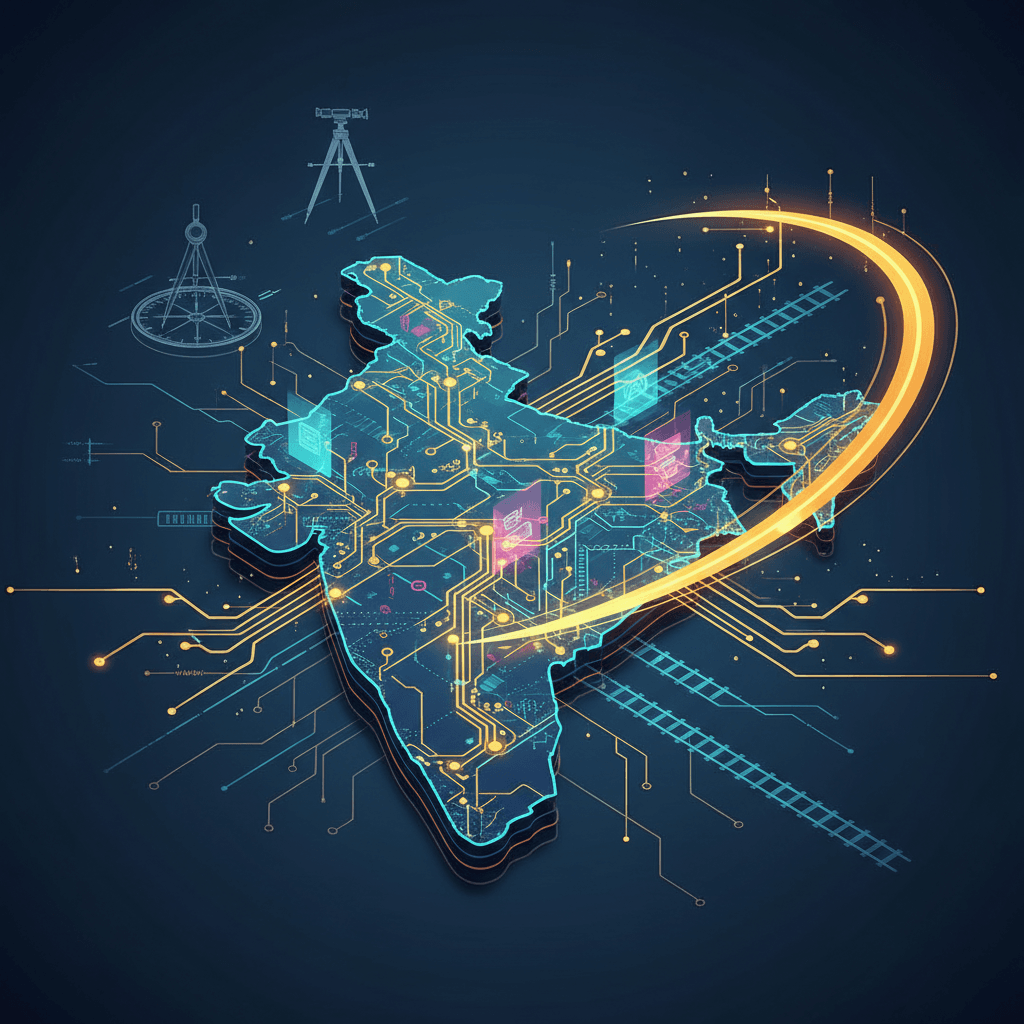MapMyIndia's Deep R&D Predates Google Maps, Challenges Dominance with AI
MapMyIndia's decades of deep local R&D, lauded by leaders, charts India's self-reliant digital future against global mapping giants.
October 13, 2025

In a significant endorsement for homegrown technology, Zoho co-founder Sridhar Vembu and Union Minister for Railways, Communications, Electronics & IT, Ashwini Vaishnaw, have lauded MapMyIndia's consumer app, Mappls, suggesting its underlying technology is the result of research and development that predates even that of Google Maps. Vembu, a respected figure in the Indian technology landscape, praised the navigation app on social media, stating it reflects "decades of R&D, much longer than Google Maps." This vocal support from industry leaders and government officials signals a strengthening push for 'Aatmanirbhar Bharat' (self-reliant India) in the critical digital infrastructure space, directly challenging the dominance of global tech giants. The praise coincides with the government's plan to sign a Memorandum of Understanding (MoU) with MapMyIndia to integrate its Geographic Information System (GIS) applications within the Indian Railways, a move that could significantly expand the platform's public infrastructure footprint.
The assertions of a long-term R&D advantage are rooted in MapMyIndia's unique history, which began long before the era of ubiquitous internet and satellite mapping. Founded in 1995 by Rakesh and Rashmi Verma, the company, formally known as C.E. Info Systems, embarked on the monumental task of digitally charting India's complex and often unorganized topography. In the absence of readily available digital data, the Vermas and their teams of surveyors physically traversed cities and towns, manually recording streets, landmarks, and house numbers. This foundational, on-ground data collection process, which started years before Google launched its mapping services, forms the bedrock of what the company claims is a more detailed and accurate hyperlocal dataset, particularly in the rural and semi-urban areas of India where global competitors have historically lagged. This painstaking, pre-digital era effort is what Vembu alluded to, highlighting a deep, localized understanding of the Indian terrain built over nearly three decades.
This deep-seated data advantage is now being amplified by modern artificial intelligence and machine learning technologies. MapMyIndia has been leveraging AI for the past several years to enhance map creation, data processing, and feature development. The company offers a suite of AI-powered solutions, including geospatial analytics and vision AI to interpret real-world imagery. A prime example is 'Mappls RealView', a 360-degree panoramic street view feature that serves as an indigenous alternative to Google Street View. The platform provides features specifically tailored for Indian conditions, such as alerts for speed breakers, potholes, and accident-prone zones, along with 3D junction views to help navigate complex flyovers and underpasses—a common point of confusion for drivers.[1][2][3] Furthermore, its partnership with India Post to integrate the DIGIPIN system aims to create a comprehensive digital address system, enabling doorstep-level navigation accuracy.[4][5][6][7] This focus on India-specific challenges and solutions is a cornerstone of its strategy to differentiate itself from global platforms that offer a more standardized product.
The high-profile endorsements and the planned railway partnership carry significant implications for India's technology and AI industry, representing a clear policy direction favoring domestic players in strategic sectors. The government's backing is seen as a crucial step in fostering a competitive ecosystem where Indian companies can scale and challenge established foreign entities. For the AI industry, this signals a potential increase in demand for localized datasets and AI models trained on Indian contexts. The government's focus on data sovereignty—ensuring Indian data remains within India—further bolsters the case for domestic firms like MapMyIndia, which stores all its map data locally.[5] This strategic alignment with national initiatives like 'Digital India' and 'Make in India' could unlock more government contracts and encourage further investment in homegrown deep tech and AI startups, creating a ripple effect across the entire digital economy.[8] The surge in MapMyIndia's share price following the announcements underscores investor confidence in this strategy and the potential for domestic tech champions to achieve significant growth with government support.[2][3]
In conclusion, the commendation of MapMyIndia by influential figures like Sridhar Vembu and Ashwini Vaishnaw is more than just praise for a single company; it is a powerful statement about the capabilities and potential of India's domestic technology sector. By highlighting the company's long-standing R&D efforts and its deep understanding of the local landscape, they are championing a vision of a digitally self-reliant India. The planned integration with Indian Railways and the broader 'Swadeshi' push provide a tangible pathway for MapMyIndia to expand its reach and impact. While global giants like Google Maps still hold a significant advantage in areas like real-time urban traffic data, the focus on hyperlocal accuracy, India-centric features, and data sovereignty presents a compelling value proposition. This moment could mark a significant turning point, not only for the digital mapping landscape in India but for the nation's broader ambitions to build a world-class, indigenous technology ecosystem powered by advanced AI and deep-tech innovation.